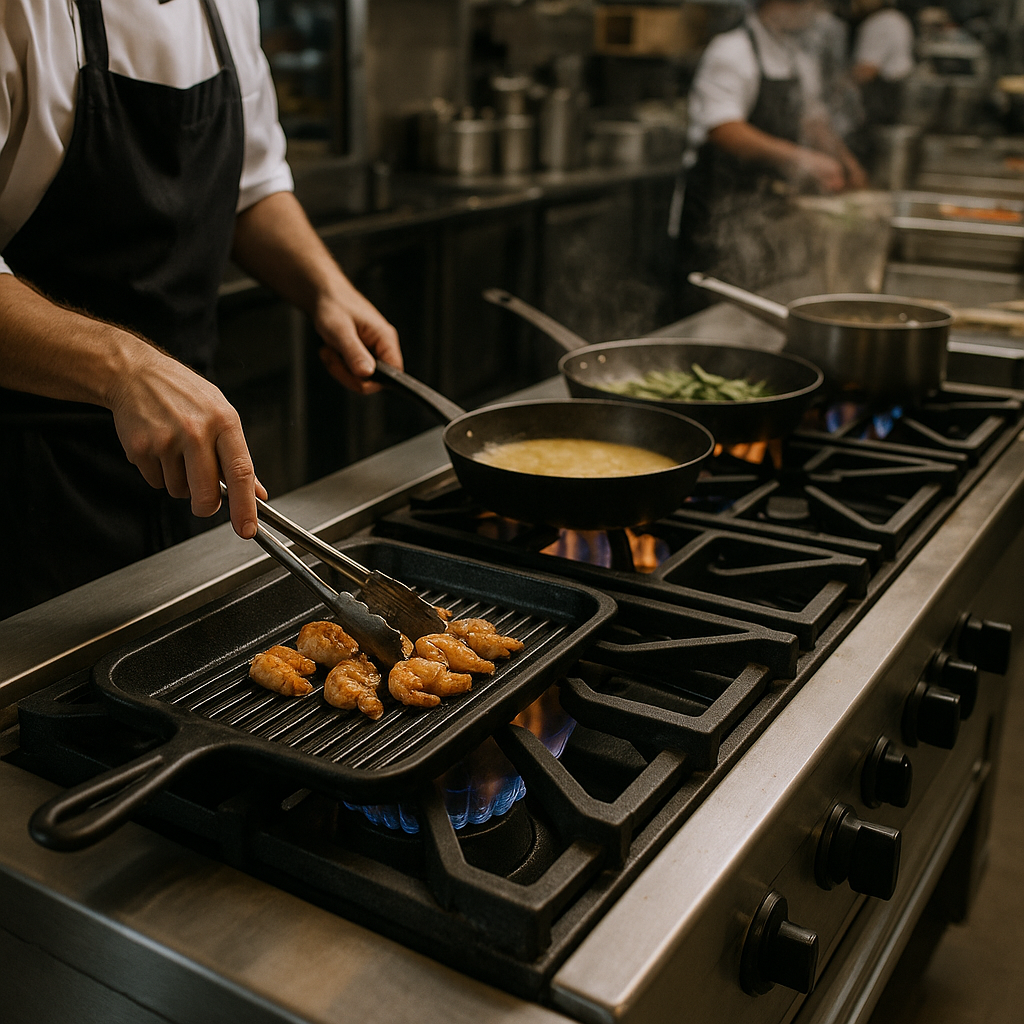
10 Powerful Reasons to Choose Cast Iron Stove Grates for Industrial Kitchens
Introduction to Cast Iron in Industrial Kitchens
Cast iron has been a kitchen staple for centuries, but in industrial kitchens, it’s more than just tradition—it’s a necessity. Whether you’re cooking for hundreds daily or operating a high-volume catering service, cast iron stove grates offer the kind of durability, performance, and reliability you simply can’t find with other materials. These grates stand up to the toughest cooking conditions, making them the preferred choice for commercial kitchens around the world.
Industrial chefs and restaurant owners rely on materials that won’t let them down. When the kitchen’s heat is on, cast iron grates provide rock-solid support—literally. Their heat-retaining properties, rugged composition, and long-lasting nature make them an excellent investment.
Understanding Cast Iron Stove Grates
Cast iron stove grates are thick, heavy-duty frames placed over stove burners to support pots and pans during cooking. Their main job? To distribute heat evenly and hold up under extreme temperatures.
There are two major types:
Raw cast iron grates: Uncoated and highly heat-conductive, ideal for professional use.
Enameled cast iron grates: Easier to clean but slightly less robust.
In an industrial setting, raw cast iron is often preferred due to its longevity and adaptability.
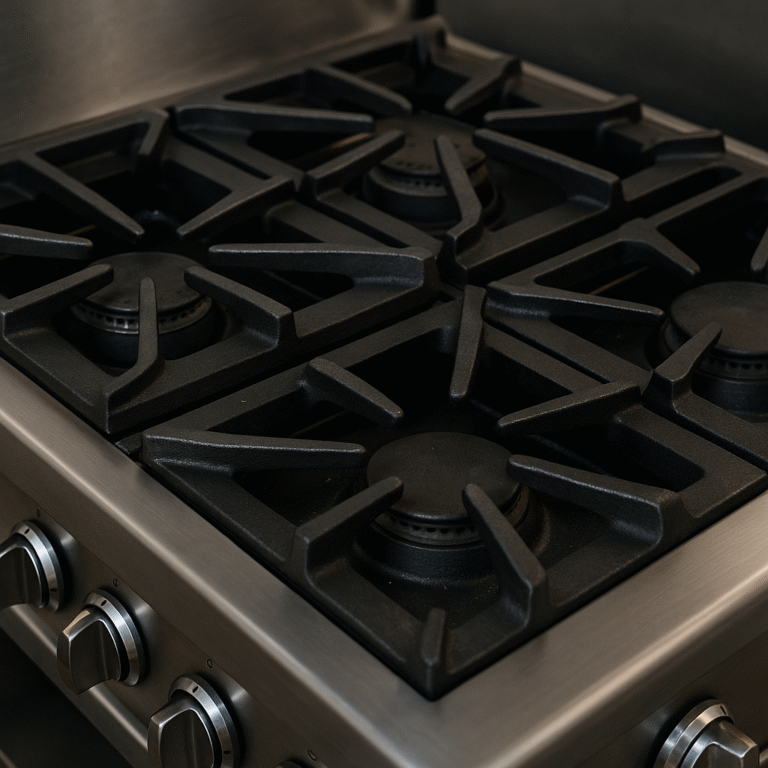
Key Advantages of Cast Iron Stove Grills
Unmatched Heat Retention
Cast iron absorbs and retains heat better than stainless steel or aluminum. This ensures consistent cooking temperatures—perfect for commercial kitchens.Superior Durability
These grates resist warping and wear even under continuous high-heat exposure.Heavy-Duty Support
Whether it’s a giant stockpot or a grill pan, cast iron grates offer reliable support.Improved Fuel Efficiency
With even heat spread, gas consumption is optimized—a plus for kitchen costs.
Comparison with Other Materials
| Feature | Cast Iron | Stainless Steel | Enamel-Coated Iron |
|---|---|---|---|
| Heat Retention | ✮✮✮✮✮ | ✮✮ | ✮✮✮ |
| Durability | ✮✮✮✮✮ | ✮✮✮ | ✮✮✮✮ |
| Cost-Effectiveness | ✮✮✮✮ | ✮✮ | ✮✮ |
| Maintenance Needs | ✮✮ | ✮✮✮✮ | ✮✮✮ |
Clearly, cast iron outperforms the competition where it matters most for commercial use.
Applications in Industrial Kitchen Settings
In industrial kitchens—like hotels, restaurants, and catering services—grates need to withstand long hours and heavy cookware. Cast iron grates excel at:
Supporting oversized pots and pans
Handling intense burner heat
Operating efficiently in 24/7 kitchens
They’re often paired with large commercial stoves and are compatible with various cooking surfaces including induction.
Applications in Industrial Kitchen Settings
Efficiency isn’t just about speed—it’s about consistency. Cast iron stove grills ensure even heat distribution across the surface, reducing cooking times and preventing hotspots.
Benefits include:
Shorter prep and cook times
Reduced energy usage
Higher output with fewer mistakes
All of which translate into better kitchen productivity.
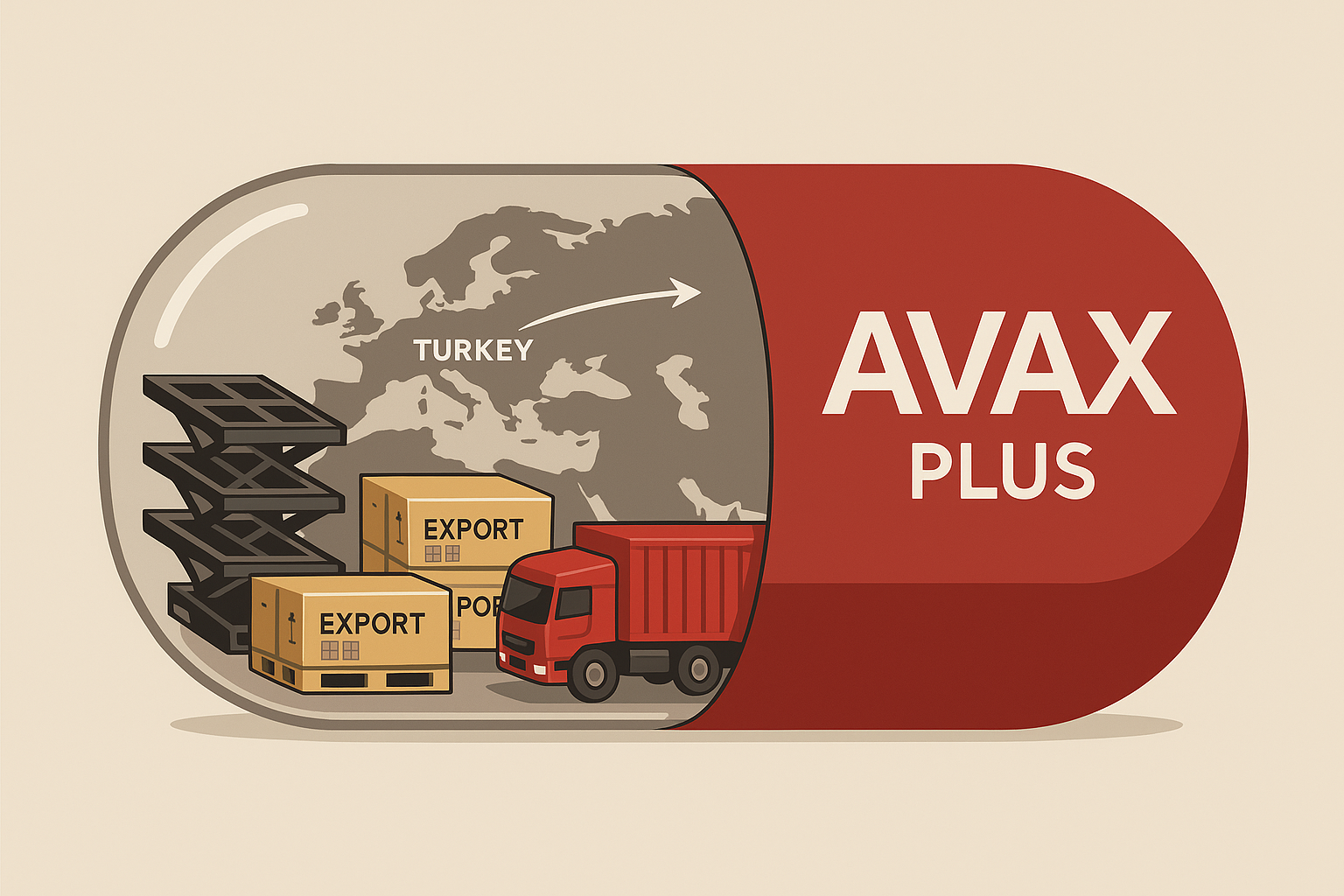
Manufacturing and Quality Assurance
The durability of cast iron stove grates for industrial kitchens begins with the precision of the manufacturing process. High-quality grates are crafted through sand casting—a process that allows for intricate detail and uniform thickness.
Key steps include:
Molten iron pouring into pre-designed molds
Controlled cooling to reduce internal stress
Machining and finishing to smooth edges and ensure exact fit
Quality assurance protocols like ISO 9001 ensure each batch meets safety, consistency, and performance standards. Some manufacturers even go a step further by offering custom testing for industrial applications.
Maintenance and Longevity Tips
Maintaining your cast iron stove grates ensures they last for decades. Here’s how to keep them in peak condition:
Season Regularly: Rub with a light coat of vegetable oil and heat to create a protective non-stick surface.
Avoid Soaking: Prolonged exposure to water leads to rust.
Use a Wire Brush: For cleaning without damaging the grate.
Dry Thoroughly: After each wash, dry and lightly oil to prevent oxidation.
With proper care, cast iron can outlive the stove it sits on.
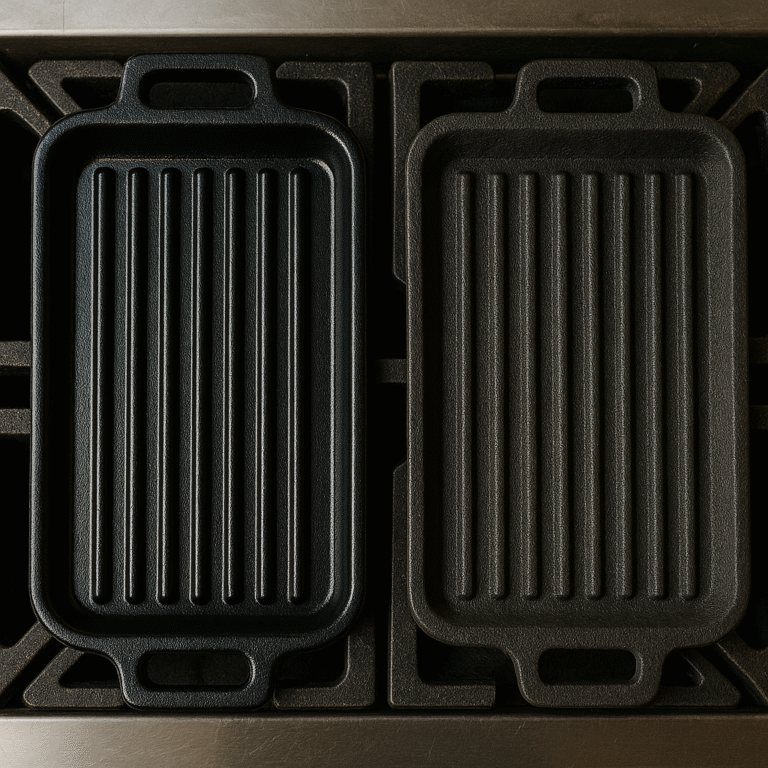
Customization for Commercial Needs
Industrial kitchens often require tailored solutions. Fortunately, cast iron stove grates are highly customizable:
Size & Shape: Adapt to fit standard or bespoke burners.
Weight Grades: Lighter for export, heavier for stationary setups.
Surface Texture: Smooth for grilling, ribbed for better grip.
Branding: Logos, batch numbers, or QR codes for inventory control.
Manufacturers can produce large batches with consistent specs, ideal for hotel chains and restaurant franchises.
Environmental and Cost Benefits
While the upfront cost of cast iron may seem high, its long-term value is unmatched.
Environmental Pros:
100% recyclable
Low energy needed for remelting
Long lifecycle reduces replacement waste
Cost Analysis:
| Factor | Cast Iron | Stainless Steel |
|---|---|---|
| Initial Cost | Medium | High |
| Replacement Frequency | Low | Medium |
| Energy Savings | High | Medium |
Over a 10-year span, cast iron grates often prove to be the most economical and eco-friendly option.
Common Myths About Cast Iron Stove Grates
Let’s bust some myths:
“They’re too heavy.”
True, they’re heavier—but that’s why they’re stable and long-lasting.“They rust instantly.”
Only if neglected. With regular seasoning, rust is easily avoided.“They take too long to heat.”
They heat slower than aluminum, but once hot, they stay hot much longer—ideal for busy kitchens.

Buying Guide for Cast Iron Stove Grills
Before purchasing, consider these key specifications:
Grate dimensions
Material grade (e.g., ASTM A48 Class 30)
Finish type (bare, enamel, powder-coated)
Compatibility with your stove model
Load-bearing capacity
Top Suppliers:
Lodge Cast Iron (US)
Tandoor Morni (India)
OEM Exporters (China)
Always request material test certificates and warranty information before bulk orders.
Case Studies from Industrial Kitchens
Case Study 1: Gourmet Bistro Chain in Chicago
Switched to cast iron grates and cut fuel usage by 12% while reducing grate replacements from twice a year to once every 3 years.
Case Study 2: Mumbai Catering Service
Custom heavy-duty cast iron grills allowed for simultaneous cooking of 40+ dishes during peak wedding season—without any grate warping.
Case Study 3: European Hotel Group
Integrated branded cast iron grills into their cooking stations, enhancing aesthetics and function while meeting EU safety standards.
Future Trends in Stove Grate Technology
Technology is transforming even traditional materials like cast iron:
Smart Coatings: Heat indicators that change color when optimal temperature is reached
Hybrid Materials: Blends of cast iron and ceramic for specific culinary applications
Robotic Manufacturing: Enhances precision and lowers production costs
Soon, even cast iron stove grates might be part of a smart kitchen network!
FAQs about Cast Iron Stove Grates
1. Are cast iron stove grates safe for high-temperature cooking?
Yes, they can withstand extreme temperatures without warping or releasing harmful chemicals.
2. How do I prevent my cast iron grates from rusting?
Keep them dry, season regularly, and avoid dishwashers or prolonged soaking.
3. Can I use cast iron grates on an induction stove?
Yes, if the stove supports cast iron’s weight and shape. Always check manufacturer compatibility.
4. Do cast iron stove grills come in different sizes?
Absolutely. Many manufacturers offer customization to fit any stove model.
5. How often should I replace my industrial cast iron stove grates?
With proper care, replacement may only be needed every 5–10 years.
6. Are enameled cast iron grates better than bare cast iron?
Enameled grates are easier to clean, but bare cast iron provides better heat retention and is preferred for heavy-duty use.
Conclusion and Final Thoughts
When it comes to industrial kitchen performance, cast iron stove grates are the gold standard. Their exceptional heat retention, rock-solid durability, and adaptability make them ideal for demanding environments. From catering giants to hotel chains, many professionals trust cast iron to deliver consistent cooking results day in and day out.
Whether you’re sourcing for your kitchen or exporting to meet global demand, investing in quality cast iron stove grates is a decision you won’t regret.




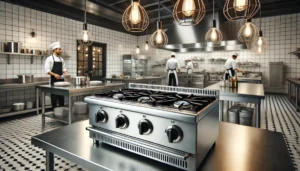
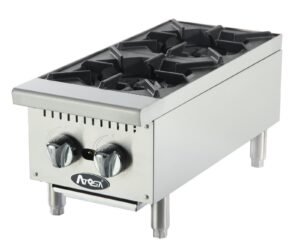

No comment yet, add your voice below!